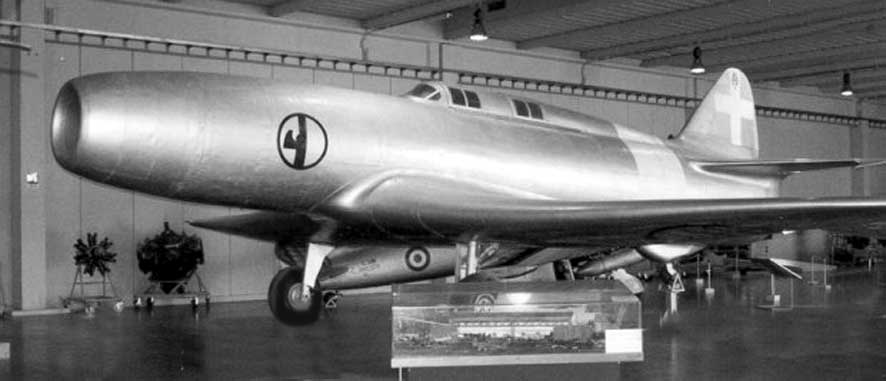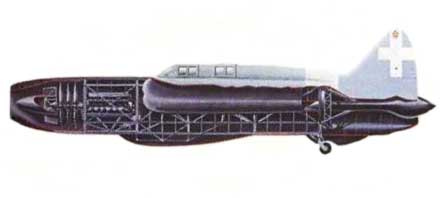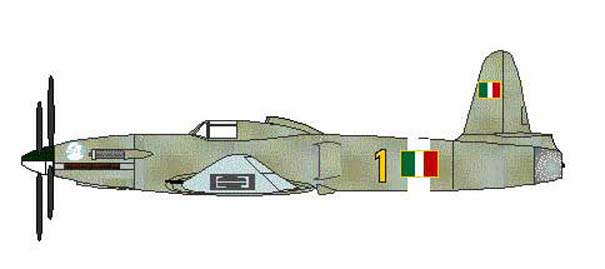

History:
 A cut away image showing how the "Thermojet" was fitted into the C.C.-2 |
In 1931 Ing Secondo Campini submitted a report
to the Italian Air Ministry, regarding the use of jet engines in aircraft
.His design which he called the "Thermojet" consisted of a 900
hp Isotta Fraschini L.121/R.C.40 piston engine driving a compressor which
used two ducted fans to compress the air and one fan to direct the flow
of air, a ring of injectors introduced fuel and the air/fuel mix was burnt
to give thrust. |
|
On the 5/2/1934 a contract was signed with the Italian Air Ministry to build two prototype aircraft powered by the Campini "Thermojet" (called the C.C.-2) and one fuselage for static tests. Campini's own company V.E.N.A.R. Did not have the ability to make the aircraft and formed a partnership with the Caproni Company of Taliedo, with Campini in over all responsibility for the design and construction of the C.C.-2 with a contract dead line of 31/12/1936. Unfortunately the deadline was not reached because of technical difficulties and rising costs, how ever the Italian Air Ministry granted an extension, much to the relief of all concerned. The first prototype (MM 487) was ready by 1940 and made it's first flight at the Taliedo airfield on the 27/8/1940 for ten minutes and again on the 16/10/1940 for five minutes. The second prototype (MM 488) flew for the first time on the 11/4/1941, on the 30/11/1941 MM 488 was flown on an official flight from Milan to Rome at a speed of 217.14 km/h the afterburner not being used to save fuel No more work was done by Campini on the CC-2 as from 1942 he worked on water-jet powered mini-submarines for the Italian Navy. He did go on to design a twin jet engineered High-Altitude aircraft the S.C-3 and a ramjet powered autogiro the S.C.-5. Testing did continue with the CC-2 until September 1942, but with no apparent improvements forthcoming the two aircraft were put into storage. |
|
This how ever was not the end for the "Thermojet" engine as the Caproni Company refined the Campini engine. They concluded that it would be beneficial at high altitude as a supplementary engine to a conventional piston engine with a propellor. Accordingly Caproni started design work on the CA-183bis, a high altitude fighter, the "Thermojet" engine powered by a FIAT air-cooled radial piston engine driving a compressor to the rear of the mid-fuselage, the cooling air for the piston engine and the air for the compressor was fed be two scoops in the fuselage just behind the cockpit. It was expected that the engine would add around 60 mph at altitude to the Ca-183's top speed of 460 mph, but the Caproni CA 183 bis never got past the development of it's "Thermojet" as far as it's known.
